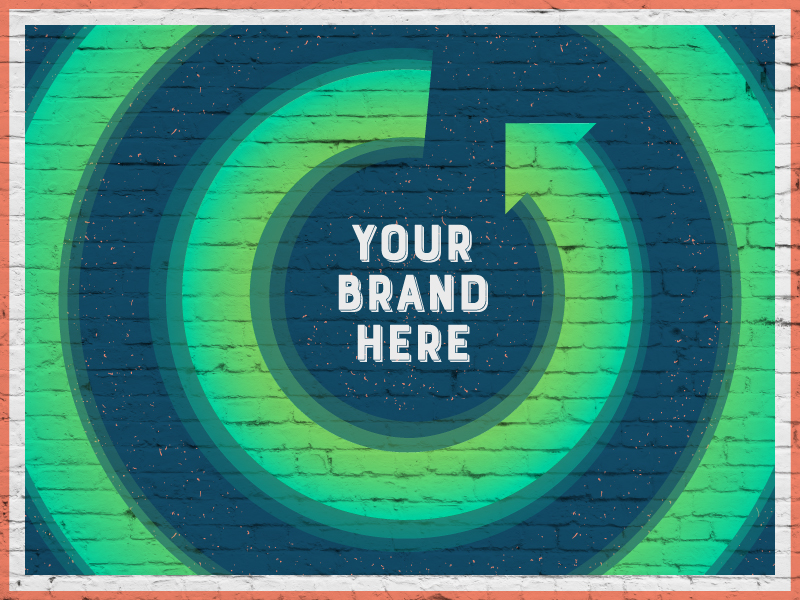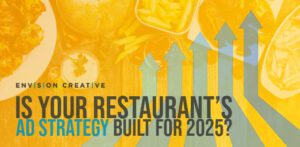There are a limited number of times that the universal consciousness of the consumer will tolerate a rebrand before the sneaking suspicion of instability starts to steer them away from a product or service. I once read on the world wide web that a brand can really only afford 2 re-brands in its lifetime before it’s kaput. But, is that still a relevant tidbit? With brands rising and falling, and the tried and true old guard brands like WalMart, Taco Bell, and Mastercard changing things up and trying to stay relevant, how does a smaller business stand out without having to make a major overhaul?
What is a brand refresh?
Total rebranding is awesome, creative, fun, and sometimes stressful but totally worth it if you’re doing it for the right reasons. However, rebranding isn’t always budget-friendly and it isn’t quick–it’s expensive and time-consuming because you’re changing all of the things and you want to get it right. With a brand refresh you’re not going full-on rebrand you’re just…trying out an updated filter.
Brand refreshes can include things like:
- Variations on a logo
- A new secondary and/or tertiary color palette
- Updated brand messaging
- Website updates to main pages and CTA (copy and design elements)
These subtle but impactful changes can mean the difference between moving boldly forward with your brand or…staying static and we know, in the ever-onward world of today, static = stagnant = death.
How to do a brand refresh right
Doing a brand refresh doesn’t mean slapping a few new colors on the website, updating your social cover photos, and then calling it a day. While it’s not nearly as labor intensive as a rebrand, it still requires thoughtful consideration, planning, and an expert eye.
Your consumers have little time, they don’t read all of the words or look at all of the pictures so a first impression is priceless. In an article for Quartz at Work, Seth Godin writes:
“We scan instead of study. And when we scan, we’re asking, ‘What does this remind me of?’ This means the logo you use, the stories you tell, and the appearance of your work all matter.”
Basically, in a world where you consumers barely have the time to read 300 words, how does your brand resonate with them? What story does your logo, color palette, and design tell your consumer?
There are a lot of thoughtful questions you need to ask yourself while going through the process of refreshing your brand. I’m going to share with you some of the questions we ask our clients in our Discovery meeting (a meeting we hold before the project begins to take a deep-dive into the brand, the pain points, and the deliverables). The point of these questions isn’t just to help our team further educate ourselves about our clients but to inspire our clients to think more deeply about what they really want out of a project.
Brand Refresh questions to ask
-
- What does your brand currently say to our customers? Think about the feedback you’ve gotten from people who have become customers *and* from people who haven’t. What kind of positive and negative feedback have you gotten about your brand’s current look and feel:
- Logo
- Color scheme
- Website
- Messaging
- What does your brand currently say to our customers? Think about the feedback you’ve gotten from people who have become customers *and* from people who haven’t. What kind of positive and negative feedback have you gotten about your brand’s current look and feel:
-
- What does your brand currently say to your employees? Think about how your employees interact with your brand. Are they proud to wear your logo and share your content? Do they feel like the current look and feel of your brand reflects a place that coincides with their values and goals?
-
- What do you *want* your brand to say? Think of adjectives and emotions that you want your brand to evoke in your customers as well as adjectives and emotions you *don’t* want your brand to evoke in your customers.An example:
Envision Creative is funny, creative, educational, consultative, approachable, inclusive
Envision Creative is not conservative, exclusive, stiff, formal, inflexible, hacky
- What are current and future goals? If you’re looking to jump into a new market, do some subtle brand message repositioning, or offer new products and services, etc., you’ll want to make sure that the changes you make reflect your goals and can last into the future! This means avoid using trendy colors and language long term. Experimenting with trends is fine for short-term campaigns. In fact, it can actually help you extend your brand reach but if you try too hard, you’ll run into problems.
- What do you *want* your brand to say? Think of adjectives and emotions that you want your brand to evoke in your customers as well as adjectives and emotions you *don’t* want your brand to evoke in your customers.An example:
-
- What can change and what must stay the same? This is an important question to ask! We’ve had some clients say “Well, based on our new goals…everything really needs to change.” Which is *fine* but that’s rebranding, not refreshing. As I mentioned above, brand refreshes can include (but aren’t limited to):
-
- Variations on your logo. Additional colors are most common for a refresh, maybe a Gen Z yellow or a Millennial pink highlight for a social campaign, or a more serious, navy blue tone for an enterprise target.
-
- An updated secondary and tertiary color palette. The addition of a new color palette can really bring a brand to life. Adding some brighter colors you can use a subtle thread throughout the site and through social imagery can bring new focus and attention to branding that may have previously slipped under the radar.
-
- Updated brand messaging. This isn’t a rewrite of your brand pillars but a look at your current vocabulary. Does the way your mission statement is written shout “WE WROTE THIS TEN YEARS AGO?” Check out some of your messaging and see if it can stand to have a mini-facelift.
- Website updates to main pages and CTAs. Refreshing header images, creating a new icon library to use, and introducing that aforementioned subtle color palette thread throughout the site lets your customers and visitors know you’re moving forward right along with them.
-
- What can change and what must stay the same? This is an important question to ask! We’ve had some clients say “Well, based on our new goals…everything really needs to change.” Which is *fine* but that’s rebranding, not refreshing. As I mentioned above, brand refreshes can include (but aren’t limited to):
- What is your budget? This is more of a pre-Discovery meeting question, knowing your budget and being upfront with it is an important part of the conversation. It helps your team understand what is feasible and what isn’t. It can also help you make the most of what you WILL be getting instead of pining after something you might not be able to afford…yet.
Is a brand refresh worth it?
Yes! As we discussed in our blog 7 signs it’s time to rebrand, there are real financial benefits to having a modern, attractive brand. Keeping ahead of your customers and prospects means you won’t get left behind.
-FINAL(01-00)-White&Blue-01.svg)





